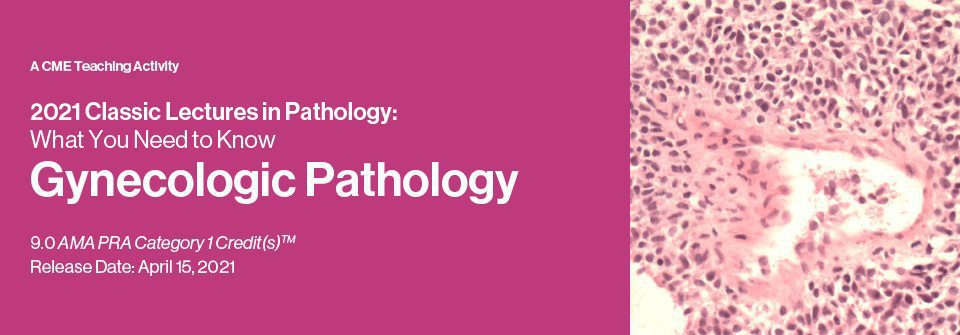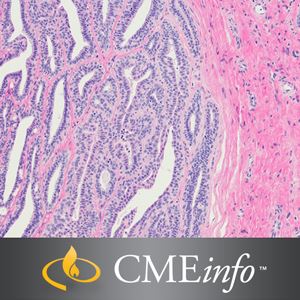No products in the cart.
Obstetrics & Gynecology, Pathology
Classic Lectures in Pathology: What You Need to Know: Gynecology 2021
11 Videos + 1 PDF
$50.00
[
Educational Objectives
At the completion of this CME teaching activity, you should be able to:
– Utilize the WHO terminology and histologic and molecular features for a variety of mesenchymal gynecologic tumors.
– Recognize the features that distinguish borderline ovarian tumors from carcinoma.
– Assess hormonally treated endometrial carcinomas and predict responsiveness to treatment.
– Recognize the different subtypes of endometrial cancers.
– Recognize variant morphologies of the most common mesenchymal tumors of the uterus.
– Distinguish adenocarcinoma in-situ (AIS) from benign mimickers.
Topics/Speakers:
Staging Endometrioid Adenocarcinoma: Pitfalls and Pearls
Charles Matthew Quick, M.D.
Endocervical Glandular Lesions: Changes on the Horizon
Charles Matthew Quick, M.D.
Squamous Dysplasia: Two Take Home Points
Charles Matthew Quick, M.D.
Biomarkers in the Uterine Cervix: What to Use and When to Use It
Anne M. Mills, M.D.
Evaluating Endometrial Carcinoma in the Molecular Age: From Type I/II to TGCA
Anne M. Mills, M.D.
From Lynch Syndrome to Immunotherapy: Mismatch Repair in the Gynecologic Tract
Anne M. Mills, M.D.
Precursors of Endometrioid Adenocarcinoma
Jennifer A. Brainard, M.D.
Endometrioid Endometrial Adenocarcinoma: Variants, Selected Challenges and Molecular Features
Jennifer A. Brainard, M.D.
Unraveling the Mesenchymal Madness in Gynecologic Tumors
Kristen A. Atkins, M.D.
Is it Borderline or Carcinoma? Teasing out the Challenging Ovarian Epithelial Tumors
Kristen A. Atkins, M.D.
Endometrial Neoplasia in Young Women
Kristen A. Atkins, M.D.
Reviews
There are no reviews yet.
Only logged in customers who have purchased this product may leave a review.
]





